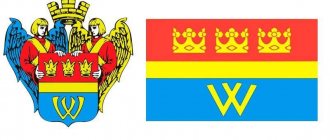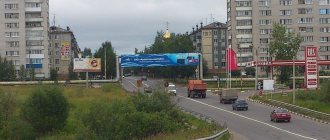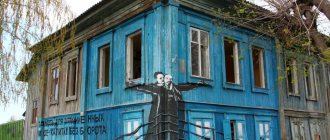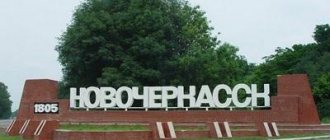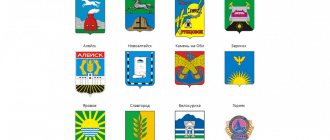For other uses, see Slavyansk (disambiguation).
City in Krasnodar Krai, Russia
| Slavyansk-on-Kuban Slavyansk | |
| Town[1] | |
| Welcome sign at one of the entrances to the city | |
| Flag Coat of arms | |
| Location of Slavyansk-on-Kuban | |
| Slavyansk-on-Kuban Location of Slavyansk-on-Kuban Show map of Russia Slavyansk-on-Kuban Slavyansk-on-Kuban (Krasnodar region) Show map of Krasnodar region | |
| Coordinates: 45°15′N 38°07′E / 45.250°N W. 38.117°E / 45.250; 38.117Coordinates: 45°15′N 38°07′E / 45.250°N W. 38.117°E / 45.250; 38.117 | |
| A country | Russia |
| Federal subject | Krasnodar region[1] |
| Based | 1865 |
| City status from | 1958[2] |
| Height | 7 m (23 ft) |
| population (2010 Census)[3] | |
| • General | 63,842 |
| • Evaluate (2018)[4] | 66,285 (+3.8%) |
| • Classify | 247th in 2010 |
| Administrative status | |
| • Subordinate | Town of Slavyansk-on-Kuban[1] |
| • Capital from | City of Slavyansk-on-Kuban[1], Slavyansky district[1] |
| Municipal status | |
| • Municipal district | Slavyansky municipal district[5] |
| • Urban village | Urban settlement Slavyanskoe[5] |
| • Capital from | Slavyansky municipal district[5], Slavyanskoye urban-type settlement[5] |
| Timezone | UTC + 3 (MSK [6]) |
| Postal code(s)[7] | 353560 |
| OKTMO I WOULD | 03645101001 |
| Web site | Sitislav.RU |
Slavyansk-on-Kuban
(Russian: Slavyansk-na-Kubani) is a town in Krasnodar Krai, Russia, located in the Kuban Delta. Population: 63,842 (2010 Census);[3]64,136 (2002 Census);[8]57,790 (1989 Census);[9]56,000 (1975).
Story
Slavyansk arose in Middle Ages as a Kop
or
Coparia
, a Genoese trading outpost controlled by the Ghisolfi family.
After the fall of Genoese power in the Black Sea region, the site was abandoned until 1747, when the Crimean Khanate erected a small fort, known in Russian sources as Kopyl
.
After the conquest of the Taman Peninsula by the Russian Empire, the Tatar fort gave way to the Cossack village
from
Kopylskaya
.
In 1865 it was renamed the Slavic Regiment, stationed here under Catherine the Great. In 1958, it was incorporated as the city of Slavyansk-on-Kuban (named to distinguish it from the city of the same name in Ukraine).[ citation needed
]. The history of Slavyansk dates back to the end of the 18th century. This city was a fortress founded by General Suvorov to protect the southern borders of Russia. In 1865 the fortress became a Cossack village. During World War II, this city was occupied by the Germans in 1942-1943, and in 1943 it was re-occupied by the Red Army. The city has monuments to those killed in the war.
According to the 1926 Soviet census, more than 69% Ukrainians lived in the city.[10]
The city of Slavyansk in Kuban
Slavyansk in Kuban is a small city located in the south of Russia. The city of Temryuk is located 55 km west of Slavyansk, Krymsk is 30 km south, and the distance to Krasnodar is about 70 km by car. The coast of the Azov Sea is 50 km in a straight line, and the Black Sea is 85 km. The road network is well developed.
The settlement is located on the right bank of the Protoka River, surrounded by a network of desalination canals, since the main type of employment of local residents is agriculture. The map shows that there are agricultural plots, fields and gardens all around. More than two-thirds of the sown areas are devoted to grain crops.
The author of the video is Dmitry Pukhalsky.
Slavyansk is famous for growing rice. Around the city there are numerous villages, hamlets, villages, and holiday villages. The city's population has been slowly but surely growing in recent years and reaches 66 thousand. Selling houses allows everyone to move in.
The composition of the population corresponds to the name of the city, and is 95% Slavic. Local authorities are deciding the issue of uniting the city with the Trudobelikovsky farm. If the unification takes place, the population will increase to 80 thousand.
Most of the city is occupied by the private sector. As a purchase, you can choose both houses with plots and comfortable housing. You can buy an apartment inexpensively directly from the developer.
The city of Slavyansk in Kuban, Krasnodar Territory, is actively developing. Petroleum products and construction materials are produced here. There is a garment factory and a poultry plant, factories for the production of canned food, wine, cheese and other food products.
The entire Krasnodar region is known for its mild maritime climate. The area has a variety of places for fishing, hunting, and tourism. In summer the weather is suitable for sailing sports. The most convenient way to get to the resort areas of Achuevo and the Kuchugury tract, located on the coast of the Azov Sea, is from Slavyansk.
In the city itself there is a balneological hospital “Priazove”, which offers relaxation, treatment and prevention of a wide range of diseases.
Buying a house here is a good idea. There is where to work and where to relax. Reviews from those who moved from other cities are unanimous: Slavyansk-on-Kuban is a well-groomed and cozy town where sincere and sympathetic people live. Flower beds, fountains, affordable secondary housing. Local residents prefer to pronounce the name with emphasis on the first syllable - Slavyansk.
From the European part of the country, you can get to the city by car along the M-4 highway through Krasnodar, or use the branch of the Rostov-on-Don - Timashevsk highway with a further turn to the Kalininskaya village. If you travel by rail, for example, by the Moscow-Novorossiysk train, then you should get off at Protoka station.
There is also a bus service from Moscow. Taking the bus is not as comfortable, but it’s faster – less than a day. You can also fly by plane to Anapa or Krasnodar, and from there by minibus, bus or taxi (there are free advertisements) to your destination.
The city used to have a small airport, but now its runway is used only for aviation work.
Toponymy
The name of the city comes from the name of the village of Slavyanskaya in 1958.[2] Slavyansk already existed since the times of the USSR in the Donetsk region, so the clarification “-na-Kuban” was added to the name of the city. The name of the village was given by the name of the fortification “Slavic Feldshanets” of the Slavic Hussars, which was under the command of Alexander Suvorov on the right bank of the Kuban.
In different sources, the name “Slavyansk” is made differently - by the first and second syllable, but local residents adopted the name Slavyansk by the first syllable.
How to move
If you are planning an intercity move, then it is advisable to turn to professionals. Then you don’t need to waste time looking for movers and transport. The company takes care of everything.
When planning your move, you should pay attention to the following points:
- You should think in advance which things will be loaded first and which ones later. It is important that fragile items are not crushed.
- You should not postpone fees until the last day. But if it is not possible to do everything in advance, it is better to turn to specialists.
- Moving provides an opportunity to get rid of unnecessary things. You should not take with you everything that is broken and useless.
Moving to Slavyansk-on-Kuban will interest everyone who wants to settle in comfortable conditions. It has everything you need for life, but in scale it is much smaller than large cities.
Economy
- Petroleum products production
- Food industry: wine, canning, butter, cheese, rice and grain, poultry farms.
- Light industry: garment factory
- Production of building materials
Agriculture
The Slavyansky district is one of the largest agricultural regions of Kuban with a predominance of agriculture. Grain crops occupy two-thirds of the sown area. The leading direction is rice production. More than 30% of the total Kuban rice harvest is harvested in the Slavyansky region. Agricultural products are widely known in the region and beyond. This is the largest garden in Europe. In terms of gross harvest of fruits and berries (annual production volume is more than 30 thousand tons), the company ranks first in the region (26% of the total volume). Livestock farming and fishing are also developed.
Climate of the Slavyansky region
The Slavic region is located within the climatic province of the Azov-Kuban Plain, which is part of the climatic region of the Northern slope of the Greater Caucasus and the plains of the Ciscaucasia.
This territory is exposed to polar and Atlantic air masses.
The climate of the region is temperate continental. The main factor determining the peculiarity of the climate is the proximity of the Azov and Black Seas, which significantly soften the continentality, giving the climate a moderately warm character.
Air temperature in the summer months is characterized by the most constant variation. In winter, there are significant fluctuations in daily and monthly temperatures. The lowest temperatures are observed in January-February, the maximum is in July-August.
The average annual air temperature is + 10.6 0C, with an increasing trend in recent years.
Winter in this area is moderately mild, beginning in the second ten days of December and lasting 6-9 weeks, accompanied by frequent changes in air temperature above 0 °C, which causes intense thaws. The average monthly temperature in January is minus 2.6 °C. The snow cover is low, unstable and almost absent in the first half of winter. The depth of soil freezing is 0.8 m.
The transition from winter to spring is characterized by an unstable weather regime with frequent warming and cold snaps. The duration of the frost-free period is 189 days.
Summer begins in mid-May, is moderately hot, accompanied by precipitation in the form of rain showers. The average monthly temperature in July is +23 oC.
Autumn is long, characterized by warm, sunny weather, and usually begins in early October. The first frosts usually occur in mid-October, the last in mid-April.
Cooling of the air at night leads to the formation of fog. The most foggy days occur from November to March (30 days). The total number of days with fogs reaches 40.
The area belongs to the moderate moisture zone. Throughout the year, the amount of precipitation is distributed fairly evenly across months (the summer maximum is slightly prominent). The average annual precipitation is 560 mm.
Air humidity has a clearly defined annual cycle, similar to changes in air temperature. Relative humidity within the study area is quite high and ranges from 60-80%.
The wind rose is constant. In winter, northeast winds predominate, in summer – southwest. Average wind speed is 2.4 m/s. The average number of days with strong winds (more than 15 m/s) is 19, the highest speeds (18-20 m/s) are typical for winds from eastern directions.
Education
There are 91 educational institutions, including 50 schools.
- Branch of Kuban State University
- Slavic Agricultural College
- Vocational school No. 45
- Vocational School No. 20
- Slavic branch of Novorossiysk Medical College
- Slavic branch of the Technological, Economic and Legal College named after. A.A. Vyazemsky
- Branch of Moscow State University of Technology and Management. K. Razumovsky
- Branch of the Moscow State Technological Academy
- Anapa branch Industrial-technical
The population of Slavyansk-on-Kuban is 65,380 people, 90.4% of whom are Russians, Armenians occupy 4%, the remaining percentage is divided by representatives of other nationalities.
In recent years, there has been a tendency to increase the population and this is not surprising, because this city attracts not only the hospitality of its residents, excellent climate, but also its well-developed infrastructure and economy.
How to move to Slavyansk-on-Kuban
If you are going to Slavyansk-on-Kuban for permanent residence, then you may need some really useful tips:
- Try to think in advance which things you will load first and which ones you will leave for later. It is very important that fragile things are not crushed by heavy ones.
- Don't put off getting ready until the last day. However, if a situation arises in which you really do not have the opportunity to pack things in advance, then it is better to contact the specialists.
- Long-distance moving is akin to the Italian New Year - there is a real opportunity to get rid of unnecessary junk and trash. Do not take broken or useless items with you.
For the specialists of the 1st Transportnaya company, it absolutely does not matter how many things are stored in your apartment, because when moving intercity to Slavyansk-on-Kuban, they will select suitable vehicles for them. By contacting our company, you will not have to worry about searching for packaging material, dismantling furniture, disconnecting household appliances, or searching for good movers. Our company will undertake all this work. We will transport your personal belongings and furniture quickly and on time.
Infrastructure of Slavyansk-on-Kuban
Slavyansk-on-Kuban is the administrative center of the Slavyansky district, which is the largest agricultural region of the Krasnodar Territory. More than half of the sown areas are occupied by grain crops, in particular rice. Animal husbandry and fishing are no less well developed. In the city there are about 10 large enterprises focused on the production of building materials, food and light industries.
In the 90s, the Slavic Urban Cossack Society was organized in Slavyansk-on-Kuban, which currently consists of two farm societies: “Cossack Cordon” and “Slavic Cossack Kuren”. The role and influence of these communities on the cultural, educational, educational and social life of the entire city is quite significant.
The city pays special attention to the development of sports. There are several sports schools and sports and recreation centers operating here, including two Olympic reserve schools. Residents of Slavyansk-on-Kuban can also visit the swimming pool, sports complex, skate park, tennis court and any of the 97 sports grounds.
Educational institutions are represented by 13 kindergartens, 7 secondary schools, two lyceums, a station for young naturalists, a children's art school, 4 special professional institutions and a branch of Kuban State University.
Healthcare is well developed in Slavyansk-on-Kuban. The population is served by an emergency department, a blood transfusion station, 4 clinics, a district hospital, drug treatment and venereal disease clinics, a maternity hospital, a perinatal center and a social service center for elderly and disabled citizens. An important place in the city is occupied by the Priazovye balneological hospital, which provides a wide range of sanatorium and resort services.
In recent years, Slavyansk-on-Kuban has been actively developing, new houses, shopping centers, entertainment complexes are being built, the city streets are being improved and landscaped.
Sights of Slavyansk-on-Kuban
In total, the city has more than five dozen monumental, architectural and historical monuments.
Architectural monuments are ancient city buildings, which today house such important educational institutions as an art gallery, a museum of nature of the south-eastern Azov region and the Slavic Museum of History and Local Lore.
A special place among the city's attractions is occupied by the 40 Years of Victory Park, on the territory of which there is the grave of Hero of the Soviet Union Nikolai Kudri, a mass grave of civilians shot during the Great Patriotic War, as well as mass graves of the city’s defenders during the Civil and Great Patriotic War. Here, in the park, there are numerous pedestals, monuments and busts.
Religious buildings are represented by such temples as the Holy Assumption Cathedral, the Church of St. Sarkis and St. Panteleimon Church.
Advantages of moving to Slavyansk-on-Kuban with the company 1st Transportnaya
If you have a need for intercity moving, then your best solution would be to contact the 1st Transportnaya company. You don’t have to waste time and nerves searching for movers and suitable transport. We will take on all the tasks of transporting your personal belongings and furniture.
Festival of Slavic Culture
Of all the holidays of the Slavic calendar, the Festival of Slavic Culture is, without a doubt, the most important and colorful. The full name of the holiday is the Day of Slavic Literature and Culture. There are many talented people at the festival. Guests from near and far abroad, residents of Kuban and other regions of Russia come to the Slavic region to share a piece of their soul, carefully preserving the wealth of national cultures. A lot of pies, soups and dumplings are prepared. During the festival there is a Slavic hut. Preserving traditions in this region is very important. People are proud of the traditions of their country, so they pass them on from ancestors to descendants. Organizers are the Federal Agency for Culture and Cinematography of the Ministry of Culture and Mass Communications of the Russian Federation, the regional branch of the All-Russian political party "United Russia", the administration of the Krasnodar Territory, the administration of the Slavic Territory. The history of the festival began in 2004, when the provincial city of Slavyansk with a population of 60 thousand dared to hold a show of Slavic culture on an international scale. Over the course of four years, the festival has gained popularity, constantly increasing the number of participants. This year the city again welcomes guests from different countries so that they can share the wealth of national cultures and feel part of the Slavic community. A traditional procession of delegations and a parade of brass bands, a big dance of friendship and an incendiary extravaganza, a mini-festival “Filling the Apple” on the territory of the agro and a festival of children’s groups “Joy”. , the entertainment program “Dancing Until the Morning”, as well as a gala concert and a grandiose fireworks display in the festival program.
Recommendations
Notes
- ^ a b c d f g gram
Reference information No. 34.01-707 / 13-03 - ^ a b
“General information” (in Russian). Retrieved February 24, 2022. - ^ a b
Federal State Statistics Service of Russia (2011).
“All-Russian Population Census 2010. Volume 1" [All-Russian Population Census 2010, vol. 1]. All-Russian Population Census 2010 [All-Russian Population Census 2010]
(in Russian). Federal State Statistics Service. - "26. The size of the permanent population of the Russian Federation by municipalities as of January 1, 2022.” Federal State Statistics Service. Retrieved January 23, 2022.
- ^ a b c d f
Law No. 775-KZ - "On the calculation of time." Official Internet portal of legal information
(in Russian). June 3, 2011. Retrieved January 19, 2022. - Post office. Information and computing center of OASU RPO. ( Post office
).
Search for postal facilities ( Search for postal facilities
) (in Russian) - Federal State Statistics Service of Russia (May 21, 2004). “The population of Russia, the constituent entities of the Russian Federation as part of federal districts, urban settlements, urban settlements, settlements, settlements of 3 thousand or more people.” [Population of Russia, its federal districts, federal subjects, districts, urban settlements, rural settlements - administrative centers, rural settlements with a population of more than 3000 people] (XLS). All-Russian Population Census of 2002 [All-Russian Population Census of 2002]
(in Russian). - “All-Union Population Census of 1989. The actual population of union and autonomous republics, autonomous regions and districts, territories, regions, urban settlements and villages-Kuban News”, No. 152, September 18, 2004 (Legislative Assembly of the Krasnodar Territory. Law No. 775 -KZ dated September 16, 2004 On establishing the boundaries of the municipal formation Slavyansky district, on assigning it the status of a municipal district, on the creation of municipal formations - urban and rural settlements within it and on establishing their boundaries
As amended by Law dated 06/03/2009 No. 1765- KZ.
On introducing amendments to a number of legislative acts of the Krasnodar Territory on establishing the boundaries of municipalities
... Valid from the date of official publication.).
Links[edit]
Notes[edit]
- ^ abcdefg Reference information No. 34.01-707 / 13-03
- ^ B "General information" (in Russian). Retrieved February 24, 2022.
- ^ a b Federal State Statistics Service (2011). “All-Russian Population Census 2010. Volume 1" [All-Russian Population Census 2010, vol. 1]. All-Russian Population Census 2010 [All-Russian Population Census 2010]
. Federal State Statistics Service. - "26. The size of the permanent population of the Russian Federation by municipalities as of January 1, 2022". Federal State Statistics Service. Retrieved January 23, 2022.
- ^ abcde Law No. 775-KZ
- "On the Calculation of Time". Official Internet portal of legal information
. June 3, 2011. Retrieved January 19, 2022. - Post office. Information and computing center of OASU RPO. ( Post office
).
Search for postal service objects ( postal Search for objects
) (in Russian) - ↑
Federal State Statistics Service of Russia (May 21, 2004).
“The population of Russia, the constituent entities of the Russian Federation as part of federal districts, urban settlements, settlements, settlements of 3 thousand or more people” [Population of Russia, its federal districts, federal districts, districts, urban settlements, rural settlements - administrative centers and rural settlements with a population of more than 3,000 people] (XLS). All-Russian Population Census of 2002 [All-Russian Population Census of 2002]
. - “All-Union Population Census of 1989. The current population of union and autonomous republics, autonomous regions and districts, territories, negative phenomena, urban settlements and rural district centers” [All-Union Population Census of 1989: current population of union and autonomous republics, Autonomous regions and districts , territories, regions, districts, towns and villages performing the functions of district administrative centers. All-Union Population Census of 1989 [All-Union Population Census of 1989]
.
Institute of Demography of the National Research University: Higher School of Economics [Institute of Demography of the National Research University: Higher School of Economics]. 1989 - via Demoscope Weekly
. - Slavyansk-on-Kuban. Encyclopedia of Ukraine.
Sources [edit]
- Department for interaction with local government of the Administration of the Krasnodar Territory. Reference information No. 34.01-707 / 13-03 dated May 23, 2013 “Register of administrative-territorial units of the Krasnodar Territory.” (Department for interaction with local government bodies of the Krasnodar Territory administration. Reference information No. 34.01-707 / 13-03 dated May 23, 2013, Register of administrative-territorial units of the Krasnodar Territory
.). - Legislative Assembly of the Krasnodar region. Law No. 775-KZ of September 16, 2004 “On establishing the boundaries of the municipal formation of the Slavyansky district, giving it the status of a municipal district, the formation of municipal formations within it - a city and an urban settlement - and establishing their boundaries,” as amended. Law No. 1756-KZ of June 3, 2009 “On amendments to certain legislative acts of the Krasnodar Territory on establishing the boundaries of municipalities.” Came into force on the date of official publication. Published: “Kuban News”, No. 152, September 18, 2004 (Legislative Assembly of the Krasnodar Territory. Law No. 775-KZ of September 16, 2004 On establishing the boundaries of the municipal formation Slavyansky district, on assigning it the status of a municipal district, on the creation of municipal formations - urban and rural settlements in its structure and on the establishment of their boundaries
in the new edition of the Law of June 3, 2009 No. 1765-KZ “
On amendments to certain legislative acts of the Krasnodar Territory on the establishment of boundaries of municipalities.”
Valid from the date of official publication. ).

